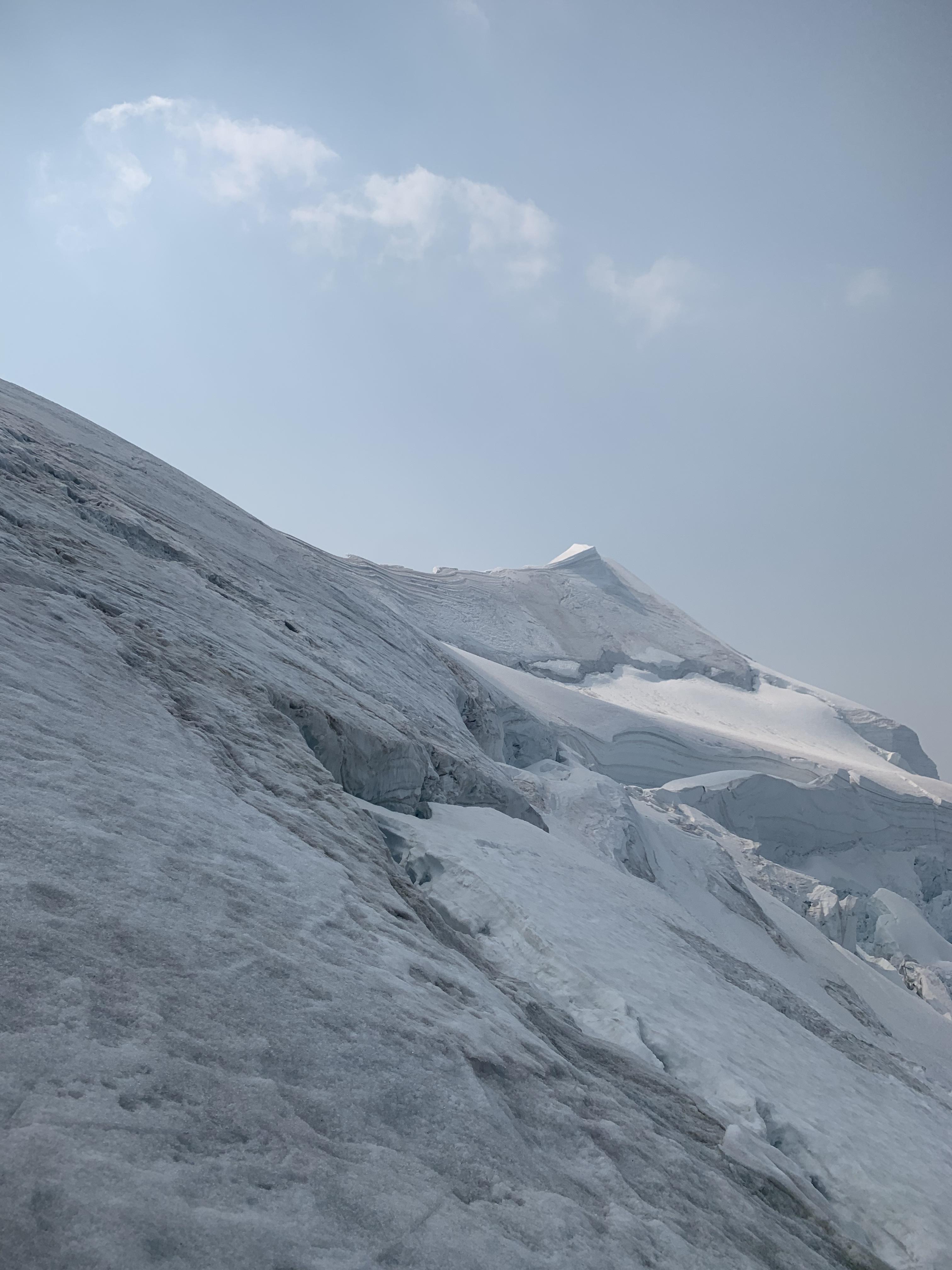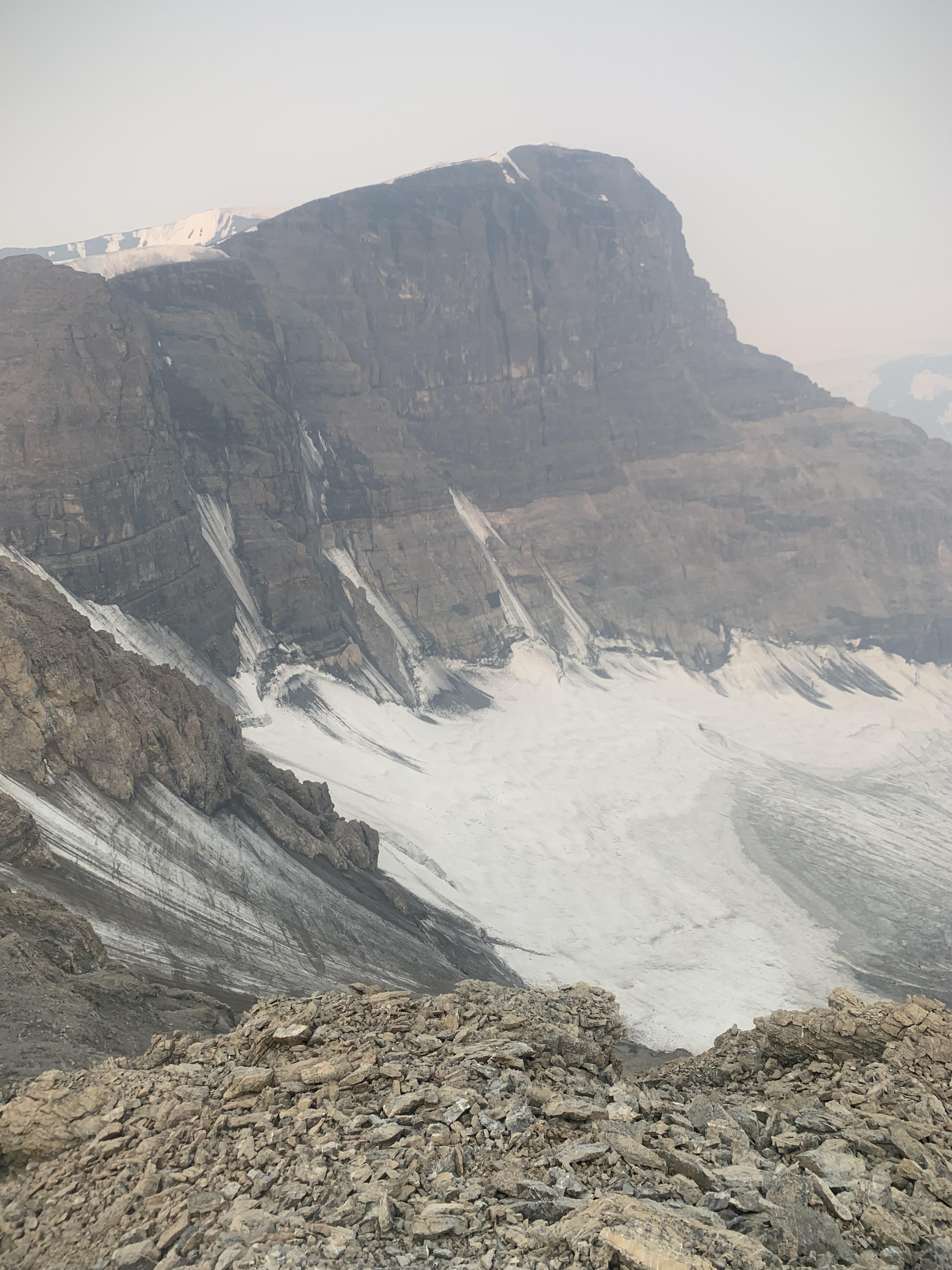The ACMG Training and Assessment Program ran Module 1 of the Alpine Guide Exam, from July 25th - 30th, 2021. We found conditions in the Rockies to be very dry for this time of year due to the heat wave followed by warm temps with minimal overnight recovery. Due to these conditions, a lot of the “classic” alpine lines are not in form. There is a lack of snow and ice on the routes, large crevasses and bergschrunds, and increased overhead hazard such as rockfall. Listed below are a few observations from the zones we visited.
Mount Huber
-The Huber Ledges were dry.
-The entire upper face was all ice.
-The bergschrund was crossable on the climber's left.
-The firn line was at 3100m.
North Vic
-The standard center glacier route had several crevasses and presented some tricky glacier travel.
-The bergschrund was crossed on the far climber’s right.
-The Black Bands were mostly snow free (no crampons or ice axes were needed).
-The upper slopes to bypass the ridge were all ice.
-The firn line was at 2700m.
Mount Temple
- Dry conditions along the East Ridge.
- Summit glacier is nearly free of snow. Crampons necessary, steel is ideal.
- Water source was found along the summit ridge from a melting cornice/ice.
- Scramble route is entirely snow free.
Mount Athabasca
-The “Ramp” is getting steeper and has the potential for overhead rockfall hazard.
-Above the “Ramp”, on the glacier, was all ice. These conditions have never been seen by anyone in the group before and were surprising.
-It is possible to access the summit ridge using all rock.
-Overall there is a lot of embedded rock in the ice on the mountain.
-The firn line was 2800m.
Photos - Mt. Temple N. Glacier, view of Mt Andromeda/A-strain area.
Play safe out there
Posted on behalf of the 2021 AG exam group


